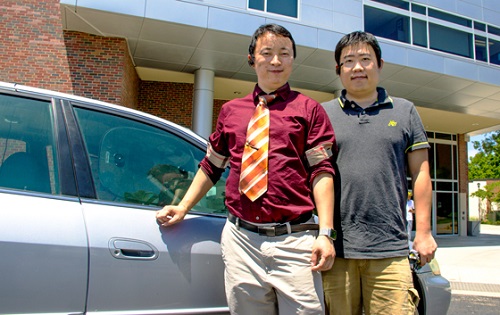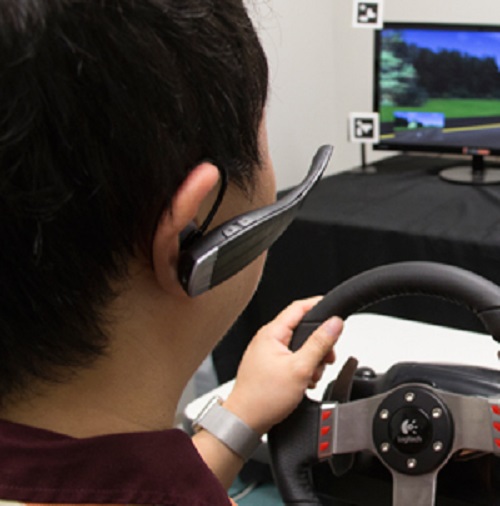Vigo Technologies, in collaboration with Wichita State University professor Jibo He and graduate students Long Wang, Christina Knopp and Utkarsh Ranjan, has announced the development of a new device that can detect a driver’s drowsiness and alert them to help prevent accidents.

The device is, more or less, a specially designed Bluetooth headset. It fits in one ear and points an infrared sensor toward the eye to detect blinks (the number of blinks a person takes is normally indicative of how drowsy the individual is); it also monitors head movements.

The combined data is then transmitted to a smartphone, whereupon it is analyzed to rate the individual’s level of drowsiness. Should he / she be deemed a bit too sleepy to be behind the wheel, the headset will vibrate, flash and beep to alert the driver to wake up.
A mobile app is included to allow users to track their alertness level and also adjust the settings for things like the sensitivity of the device.
“This will provide a new and cost-effective approach to monitor driver drowsiness and help improve driving safety,” says He.
Vigo Technologies has filed a patent for the device.
Worth noting is that for some time now, insurance companies and information technology companies have been looking for the right type of system to implement in order to monitor driver drowsiness.
To date, the most-oft tried solutions have been either camera or electrode-based systems that detect eye blinks. The problem with the former idea is the camera depends on lighting condition, posture and skin color; also, a camera typically has a limited field of view to capture eye blinks. In terms of the electrode-based solution, this approach requires a reliable attaching of the electrodes to the skin. This is not only takes a skilled hand, it’s also uncomfortable for the user, and costly to implement.
The Vigo / Wichita device is one of the first attempts at using sensors to detect eye blinks for drowsiness monitoring.
“A nonintrusive, cost-effective wearable technology that is capable of reliably detecting drowsiness in drivers could help to prevent accidents and lower fatalities related to drowsy driving, making roadways safer,” He explains.
In terms of testing, the team has conducted a three-hour simulated driving study to see how drowsiness influences driving performance, and to also assess the feasibility of using their device. Additionally, they just wrapped up an on-road driving study to evaluate the device’s ability to monitor driver fatigue. The Honda vehicle that was used during this part of the test was outfitted with the headset as well as GPS sensors, OBD-II sensors, and wearable eye trackers.
He said that he’s hoping once the research is complete, the device can see immediate use in the long-haul transportation industry.
Advertisement
Learn more about Electronic Products Magazine





